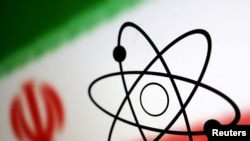Iran has agreed to a visit by the International Atomic Energy Agency this month to provide answers the U.N. watchdog and its 35-nation board have long called for on the origin of uranium particles found at three sites, an IAEA report on Thursday seen by Reuters said.
Iran has yet to provide new material, however, and its offer came before next week's quarterly meeting of the International Atomic Energy Agency's Board of Governors at which diplomats say they expect Western powers to push for a resolution calling on Iran to cooperate, a move that Tehran usually bristles at.
"The Agency has reiterated to Iran that at this meeting it expects to start receiving from Iran technically credible explanations on these issues, including access to locations and material, as well as the taking of samples as appropriate," one of two confidential IAEA reports on Iran sent to member states on Thursday ahead of the board meeting said.
The issue of the unexplained uranium particles has become an obstacle in wider talks to revive Iran's 2015 nuclear deal with world powers, since Tehran now seeks a closure of the IAEA's investigation as part of those negotiations, Western powers say.
The IAEA has said it will not yield to political pressure and its job is to account for all nuclear material. The fact material that has not been accounted for appears to have been present at these sites is therefore an issue it must keep looking into until it is resolved.
"The [IAEA] Director General [Rafael Grossi] is seriously concerned that there has still been no progress in clarifying and resolving the outstanding safeguards issues," the report said, referring to the uranium traces.
"In that context, he takes note of Iran's proposal to hold a further technical meeting with senior Agency officials in Tehran before the end of the month, but stresses that this meeting should be aimed at effectively clarifying and resolving those issues."
The 2015 deal restricted Iran's atomic activities in exchange for relief from Western sanctions. In 2018, then-President Donald Trump ordered a U.S. withdrawal from the deal, reimposing U.S. sanctions against Tehran. Iran responded by breaching and going well beyond the deal's restrictions.
In recent months Iran has installed hundreds more advanced centrifuges, machines that enrich uranium, at its underground plants at Natanz and Fordow. The move increases the pace at which it can enrich.
The 2015 deal only lets Iran produce enriched uranium with more basic, first-generation centrifuges.
The other IAEA report, issued Thursday and also seen by Reuters, showed Iran's stock of enriched uranium had shrunk slightly, decreasing by around 267 kg to an estimated 3,673.7 kg, still far beyond the 202.8 kg allowed by the deal.
Its stock of uranium enriched to 60% purity, close to the roughly 90% weapons-grade level, grew by an estimated 6.7 kg to more than 62 kg. That is more than enough, if refined further, for one nuclear bomb.






